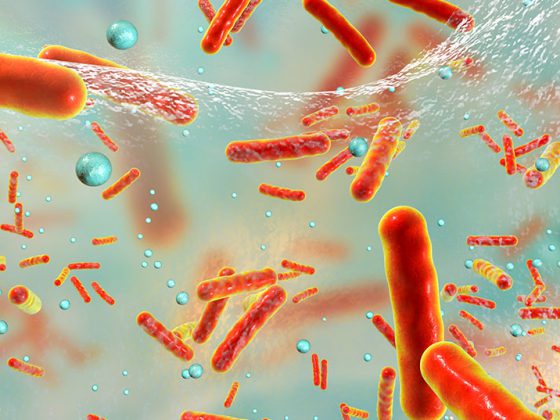More than 30,000 professionals from 174 countries addressed the results of current research at the ESC Congress in Barcelona this year. Topics ranged from prevention to imaging, digital health and artificial intelligence to antithrombotic therapy, invasive cardiology and COVID-19. The focus, however, was on cardiac imaging, which as a cross-cutting discipline within cardiovascular medicine is of extraordinary importance for clinical decision making.finding has.
Patients usually receive antiplatelet drugs, lipid-lowering drugs, antihypertensive drugs, and vascular-stabilizing drugs for stabilization after myocardial infarction. However, less than 50% of patients consistently take all of their medications after a heart attack. Now a study has shown that the preparations in a combined pill are significantly more effective in preventing negative cardiovascular events than taking the drugs separately. Most patients are completely compliant with therapy after an acute event, but this diminishes after the first six months. The study randomly assigned 2499 postinfarction patients to polypill or usual care [1]. The polypill contained aspirin (100 mg), the ACE inhibitor ramipril (2.5, 5, or 10 mg), and atorvastatin (20 or 40 mg). Usual treatment was at the discretion of the attending physician. The primary composite end point was death from cardiovascular causes, nonfatal myocardial infarction, stroke, or urgent revascularization. The Morisky Medication Adherence Scale was used to classify adherence as low, moderate, or high. At a median follow-up of three years, the primary composite endpoint occurred in 118 (9.5%) patients in the combination pill group and 156 (12.7%) in the usual care group. All four components of the primary endpoint contributed to the observed treatment effect. But the most notable contribution was cardiovascular death, which occurred in 48 (3.9%) patients in the polypill group and 71 (5.8%) in the usual-care group. As suspected, patients in the polypill group had higher adherence than patients in the usual care group. By simplifying treatment and improving adherence, this approach has the potential to reduce the risk of disease recurrence and cardiovascular death worldwide.
Cardiovascular protection by statins
Statin therapy is an effective means of preventing cardiovascular disease, the leading cause of death worldwide, and is widely prescribed. However, there are concerns that statins can cause muscle pain or weakness, leading some patients to discontinue their treatment. However, the known benefits of statin therapy in preventing cardiovascular disease, including heart attacks and strokes, outweigh the slightly increased risk of muscle symptoms. This is according to recent research findings. In most people taking a statin, muscle-related symptoms are unlikely to be caused by the drug. The known protective effects of statins against cardiovascular disease far exceed the slightly increased risk of muscular symptoms. For example, in 1000 individuals taking a moderate-intensity statin, treatment would result in 11 generally mild episodes of muscle pain or weakness in the first year, with no significant increase in subsequent years. Over a five-year period, statins typically prevent 50 major vascular events in persons with preexisting vascular disease and 25 major vascular events in persons without preexisting vascular disease, with longer treatment providing greater benefit.
A meta-analysis examined data from individual participants recorded in large-scale randomized, blinded, double-blind trials of statin therapy [2]. All studies included at least 1000 patients and a planned treatment duration of at least two years. Adverse event data were collected for all participants in 19 large randomized double-blind trials of statin therapy versus placebo (123 940 patients) and in four randomized double-blind trials of more intensive versus less intensive statin therapy (30 724 patients). Muscle symptoms such as pain or weakness occurred in similar numbers in the statin and placebo groups. Statins were not the cause of muscle pain in more than 93% of patients who reported symptoms. Statin therapy modestly increased the frequency but not the severity of muscle-related symptoms. The small increased risk of muscle symptoms occurred mainly in the first year after starting therapy.
10 minutes of exercise a day, keeps the doctor away
Very elderly people 85 years and older benefit from a 10-minute walk per day [3]. One study examined the association between walking and the risk of all-cause mortality and cardiovascular mortality in adults aged 85 years and older. The researchers used information from the Korean National Health Insurance Service (NHIS) Senior database. The study included 7047 adults aged 85 years or older who underwent the Korean National Health Screening Program between 2009 and 2014. Participants completed a leisure-time physical activity questionnaire that asked about the amount of time they spent per week on slow walks, moderate-intensity activities such as cycling and brisk walking, and high-intensity activities such as running. Participants were divided into five groups based on how much time they spent walking slowly each week. 4051 (57.5%) participants did not walk slowly, 597 (8.5%) walked less than one hour, 849 (12.0%) walked one to two hours, 610 (8.7%) walked two to three hours, and 940 (13.3%) walked more than three hours per week. In the total study population, 1037 (14.7%) participants engaged in moderate-intensity physical activity and 773 (10.9%) engaged in vigorous-intensity physical activity. Only 538 participants (7.6%) met guideline recommendations for moderate to vigorous physical activity. Of the 2996 participants who walked slowly each week, 999 (33%) also engaged in moderate or vigorous physical activity. The researchers analyzed the associations between walking, all-cause mortality, and cardiovascular mortality after accounting for energy expenditure for moderate to vigorous physical activity. Compared with inactive individuals, those who walked at least one hour per week had a 40% and 39% lower relative risk of all-cause mortality and cardiovascular mortality, respectively.
Smoking worsens heart function more than thought
According to the World Health Organization, more than eight million people die each year as a result of tobacco use. Cigarette smoking accounts for 50% of all preventable deaths among smokers, half of which are due to atherosclerotic cardiovascular disease such as heart attack and stroke. The harmful effects of smoking on the arteries and arterial diseases such as heart attacks and strokes are well known. Studies have also shown that smoking is associated with a higher risk of heart failure, in which the heart muscle does not pump blood around the body as well as it should because it is usually too weak or stiff. This means that the body is not getting the oxygen and nutrients it needs to function normally. The relationship between smoking and cardiac structure and function has not been fully investigated. Therefore, one study investigated whether smoking was associated with changes in cardiac structure and function in people without cardiovascular disease and the effects of changing smoking habits [5]. The study used data from the 5th Copenhagen City Heart Study, which examined cardiovascular risk factors and disease in the general population. A total of 3874 participants aged 20 to 99 years without heart disease were enrolled in the study. These underwent echocardiography. The researchers then compared the echocardiographic values of current smokers with those of nonsmokers after accounting for age, sex, body mass index, hypertension, high cholesterol, diabetes, and lung function. Compared with never smokers, current smokers had thicker, weaker, and heavier hearts. With increasing smoking years, less blood was pumped. It was found that active smoking and the number of pack-years were associated with deterioration of the structure and function of the left ventricle. In addition, over a 10-year period, those who continued smoking developed thicker, heavier and weaker hearts that were less able to pump blood than those who had never smoked or who quit smoking during that time.
Congress: European Society of Cardiology (ESC) Congress 2022
Literature:
- Fuster V, et al: A polypill strategy in secondary prevention: results of the SECURE trial. Hot Line Session 1. 26.08.2022
- Baigent C, et al: CTT meta-analysis of the effects of statins on muscle symptoms. Hot Line Session 9. 08/29/2022.
- Jin MN, et al: Association of usual walking with mortality in elderly adults aged 85 years and older: a nationwide senior cohort study. ePoster. 28.08.2022
- Holt E, et al: The effects of smoking on cardiac structure and function in a general population. ePoster. 26.08.2022.
CARDIOVASC 2022; 21(4): 30-31











